Last updated on 2025-11-13
A review and sample photos of the Leica Elmarit-M 21mm F2.8 ASPH. lens used with the LEICA M6 film camera, the LEICA M9-P digital rangefinder, and the LEICA M8.
Table of contents
Gallery
The following cameras were used to take the sample photos:
- LEICA M8
- LEICA M9
- LEICA M6 + KODAK E100VS film scanned with NIKON COOLSCAN ED V
Review
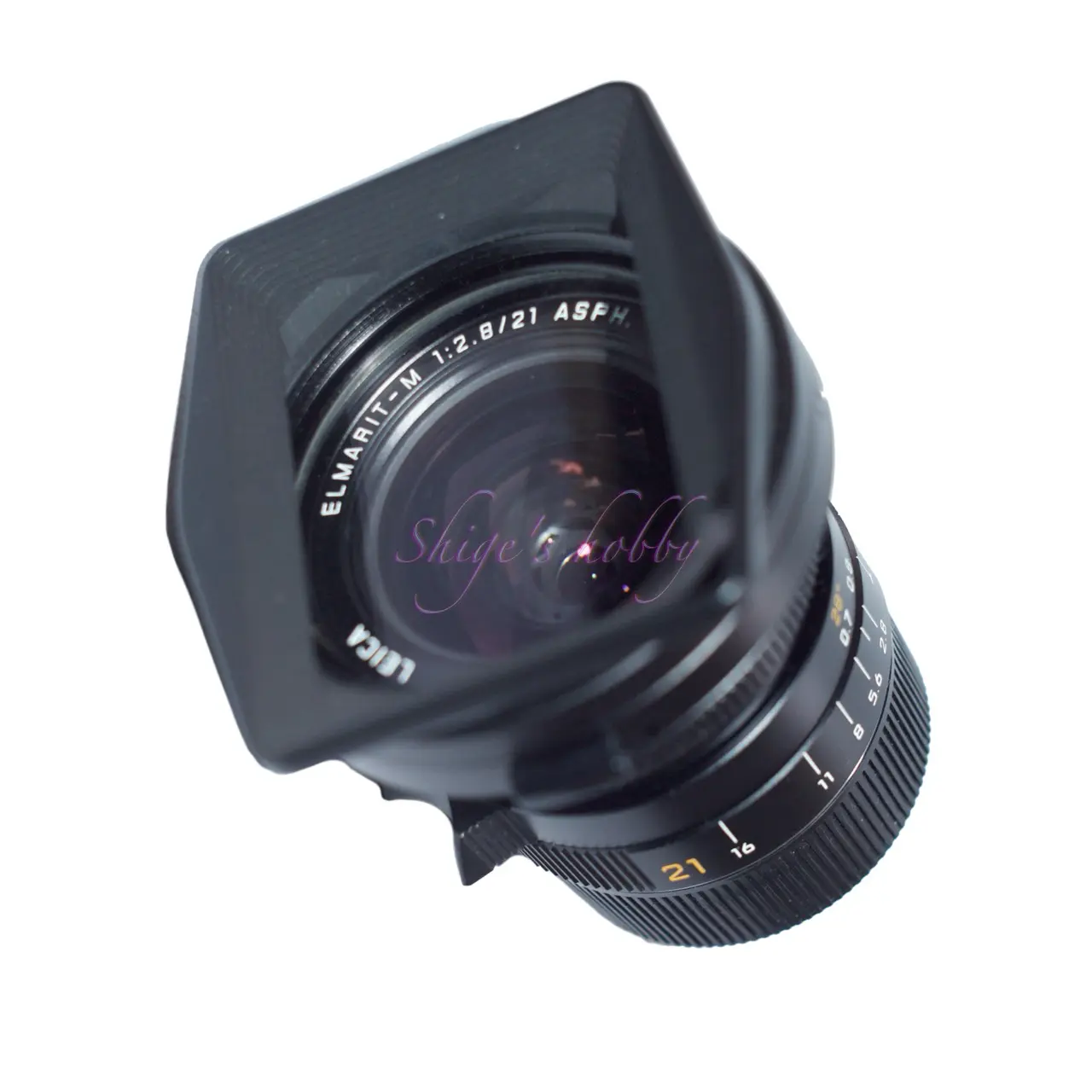
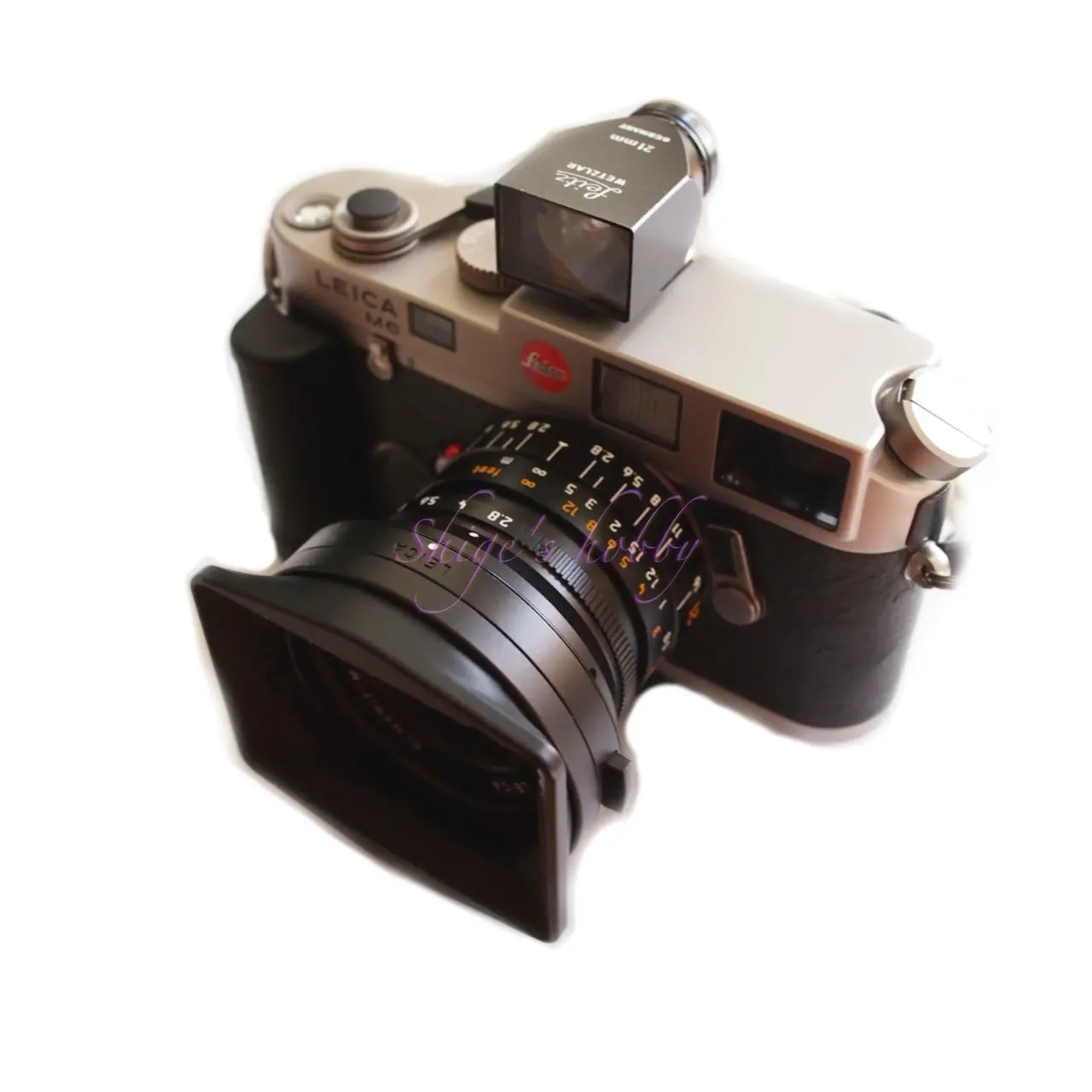
1.Overview
The ELMARIT M 21mm F2.8 ASPH. is a wide-angle lens with a focal length of 21mm that uses aspherical lenses, released in 1997.
The main specifications are as follows, and the details are listed in the table.
- Aperture value: 2.8
- Lens construction: 9 elements in 7 groups
- 1 aspherical lens
- Aperture blades: 8
- Minimum focusing distance: 0.7m
- Leica M rangefinder camera rangefinder coupling: 0.7m
- Hood: 12592
Depending on the time of manufacture, this aspherical 21mm may or may not have a 6-bit code. Those without the code can be exchanged for a mount part with a 6-bit code at Leica for a fee.
The spherical ELMARIT 21mm did not have a 6-bit code when it was sold, so most lenses do not have a 6-bit code, but you can also request an exchange at LEICA customer service.
The aspherical wide-angle series to which this lens belongs has been released in 28mm, 24mm, 21mm, and 18mm sizes, of which the 21mm and 24mm are sibling lenses and use the same hood 12592, and the lens barrel is also almost the same.
2.Usability
The ELMARIT M 21mm F2.8 ASPH. is one of the lenses that uses aspherical lenses, a feature that was introduced after the Summicron-M 28mm.
Its image quality eliminates the roughness of previous wide-angle lenses, eliminating noticeable distortion and vignetting without correction, and the bokeh is clean and unobtrusive, eliminating the negative effects of using an aspherical lens.
Compared to the previous model, the Leica Elmarit-M 21mm, which used an E60 (60mm) filter diameter, this lens’s design features a thinner tip and an E55 (55mm) filter diameter.
Contrary to its compact appearance, the number of glass elements in the lens has increased, making it heavier than the previous Elmarit-M 21mm. When holding a camera with this lens attached, it feels heavy, and its center of gravity is closer to the center, making it well-balanced when used with both digital and film Leica M cameras.
The lens focus ring has a focus lever (finger hook lever) that fits firmly with your finger, and combined with the smooth rotation unique to Leica manual focus, it makes shooting easy.
As is common with any used lens, we recommend always checking the rotation of this focus ring. A lens that does not rotate smoothly is likely to have a warped lens barrel or an abnormality in the grease. In such cases, maintenance will be required, and since maintenance costs for Leica lenses tend to be high, it is best to purchase a lens that you are satisfied with in advance.
When I was using this lens, I was using both the Leica M9 digital camera and the Leica M6 film camera in combination. The sample photos shown here show results taken with the LEICA M8 and LEICA M9-P digital cameras, and the Leica M6 with reversal film. The reversal film was taken at Meiji Village in Nagoya, and the digital camera at Yokohama Minato Mirai and Fukushima.
To digitize the reversal film, I used the Nikon COOLSCAN ED V film scanner and VueScan scanning software.
3.Summary
In conclusion, to sum up the ELMARIT M 21mm F2.8 ASPH., it is a lens that will leave you completely satisfied with its image quality for both film and digital cameras.
The image quality is designed to increase resolution for digital cameras, so if you are looking for high resolution and sharpness, this lens is the one to choose. If you prefer the softer image quality of the spherical Elmarit, you may also want to choose an older lens.
Specification and Competitor
Comparing the specifications of the aspherical Elmarit 21mm and the new Elmar 21mm F3.4 released in 2011, the Elmarit is slightly slower than the aspherical Elmarit, but is more compact and lighter, making it more portable. There is no significant difference in performance between the lens construction, and both lenses are likely to produce images that photographers will be satisfied with.
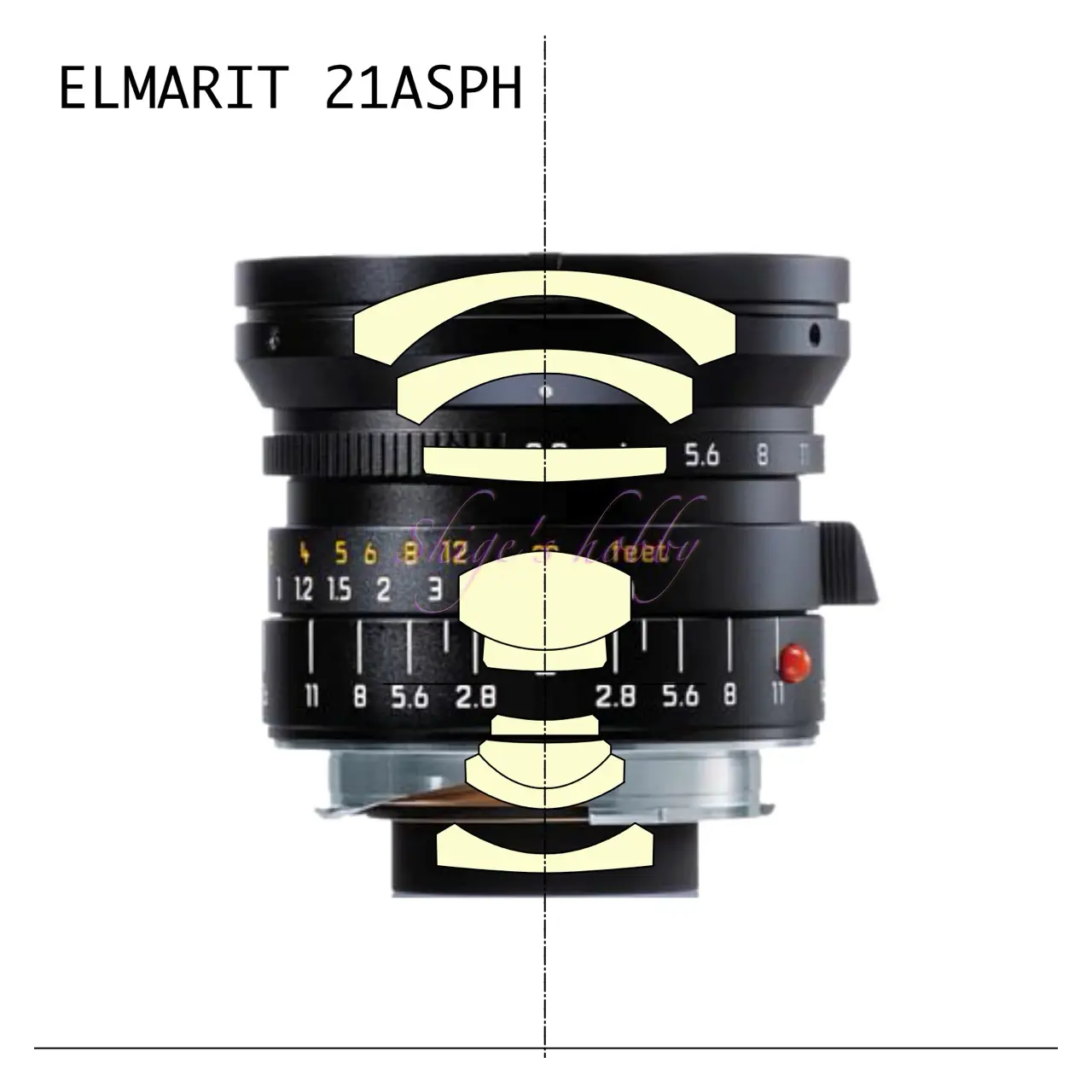
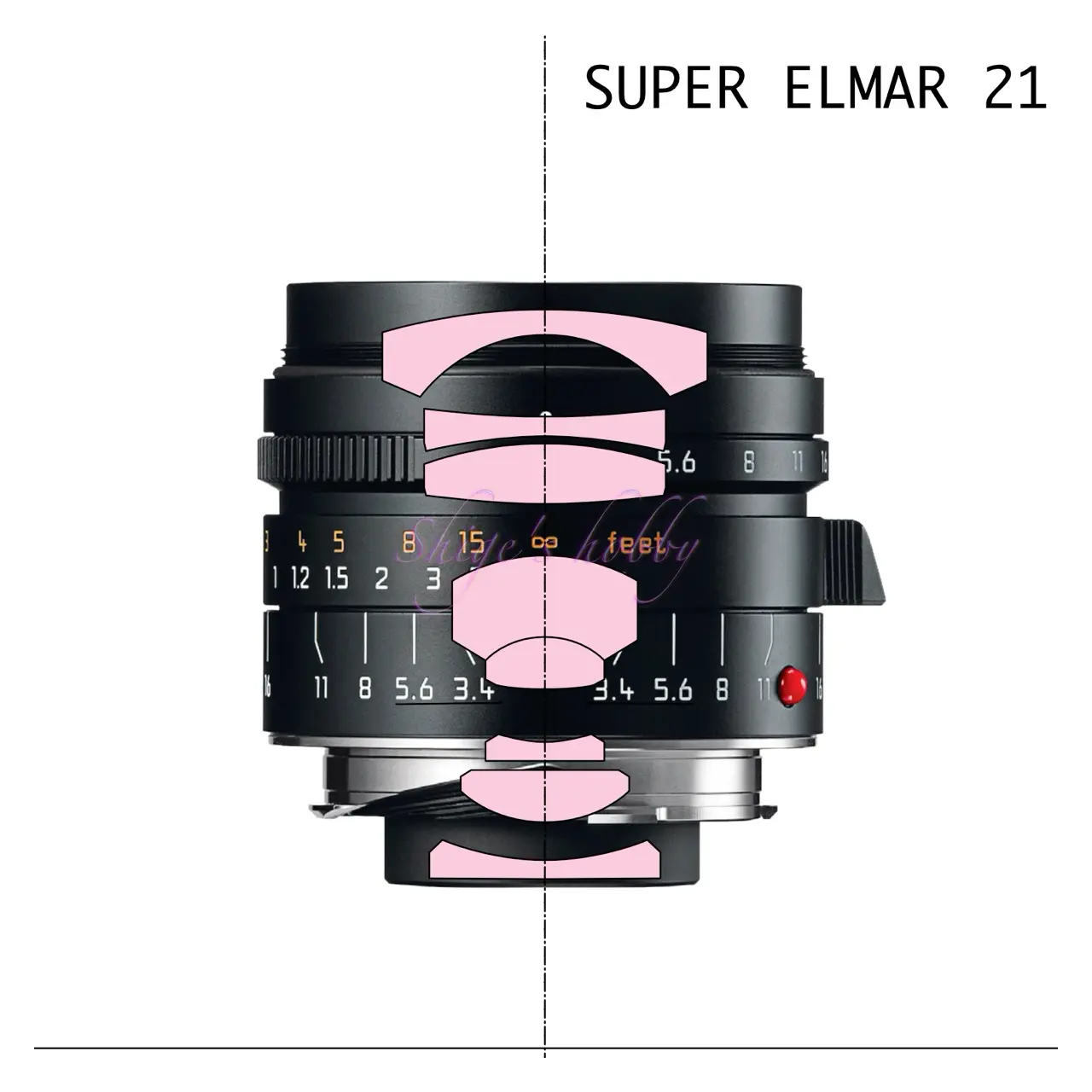
| Items | ELMARIT | ELMARIT ASPH. | SUPER ELMAR |
| Focal length(mm) | 21 | 21 | 21 |
| Max aperture | 2.8 | 2.8 | 3.4 |
| Min aperture | 22 | 16 | 16 |
| Lens Construction | 8elements in 6groups | 9elements in 7groups | 8elements in 7groups |
| Leaf blade | 8枚 | ← | ← |
| Min distance(m) | 0.7 | ← | ← |
| Lens length(mm) | 46.5 | 46 | 43 |
| Max diameter(mm) | 62 | 58 | 53 |
| Filter Size(mm) | E60 | E55 | E46 |
| Lens hood | 12543(Old-pin) 12537(New-hook) | 12592 14041 | 12465 |
| Release date | 1979 | 1997 | 2011 |
| Production number | 13,930 | 7,250 | – |
| Weight(g) | 290 | 415(Silver) 300(Black) | 279 |
Affiliate links
- ELMARIT M 21mm ASPH.・Ads by ebay

Update history
- 2025.9.26
- 2025.4.18
- 2024.7.24
- 2023.12.15

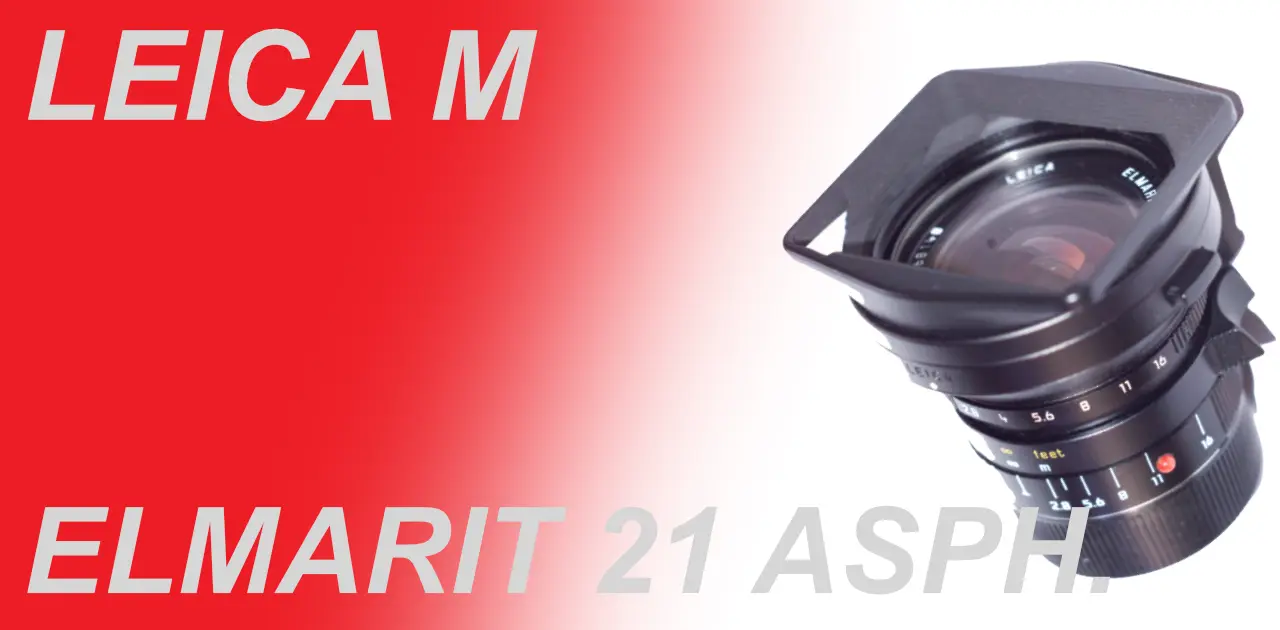

Be First to Comment